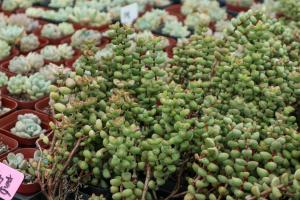What Are Pots Made From? – Bonnie Plants
When it comes to growing plants, one of the most important considerations is the container. As such, it’s important to know what materials pots are made from so you can choose the right one for your plants’ needs. In this article, we’ll explore the different types of pots available and what they’re made from, so you can make an informed decision.
Terracotta Pots
Terracotta pots are one of the most popular types of containers for plants. They’re made from clay that’s fired at high temperatures, resulting in a durable and porous material that plants love. The porous nature of terracotta allows air and moisture to pass through, which can help prevent root rot and other problems. However, since terracotta is porous, it may require frequent watering, as it can dry out quickly.
Plastic Pots
Plastic pots are lightweight, inexpensive, and easy to find. They’re often made from high-density polyethylene (HDPE) or polypropylene (PP), which are non-toxic and resistant to UV radiation. This makes them ideal for outdoor use. They may not be as attractive as terracotta or other materials, but they do come in a range of colors and designs, so you can find one that suits your taste. Plastic pots are also easy to clean and can last for several years.
Ceramic Pots
Ceramic pots are beautiful and come in a range of shapes and colors. They’re made from natural materials such as clay or porcelain, which are fired at high temperatures to create a hard and durable material. One advantage of ceramic pots is that they can retain moisture, which can be beneficial for plants that require a lot of water. However, they can be heavy, fragile, and expensive compared to other materials.
Fiber Pots
Fiber pots are made from a mixture of wood pulp, peat moss, and other organic materials. They’re biodegradable and can be planted directly into the ground without harming the plant. They’re lightweight, affordable, and come in various sizes, but they may not be as durable as other materials. Fiber pots may also dry out quickly, so they require frequent watering.
Metal Pots
Metal pots are often made from aluminum, copper, or stainless steel. They’re durable, weather-resistant, and can add an industrial or modern look to your garden. One advantage of metal pots is that they can retain heat, which can be beneficial for plants that require warmth. However, metal pots can be expensive and heavy, and may not be suitable for delicate plants.
Conclusion
Now that you know what pots are made from, you can make an informed decision about which type of container is best for your plants. Each material has its advantages and disadvantages, so it’s essential to consider factors such as the needs of your plants, your budget, and your personal taste. No matter which type of pot you choose, make sure it has drainage holes to prevent water from pooling and causing root rot. Happy planting!

 how many times do yo...
how many times do yo... how many planted tre...
how many planted tre... how many pine trees ...
how many pine trees ... how many pecan trees...
how many pecan trees... how many plants comp...
how many plants comp... how many plants can ...
how many plants can ... how many plants and ...
how many plants and ... how many pepper plan...
how many pepper plan...































